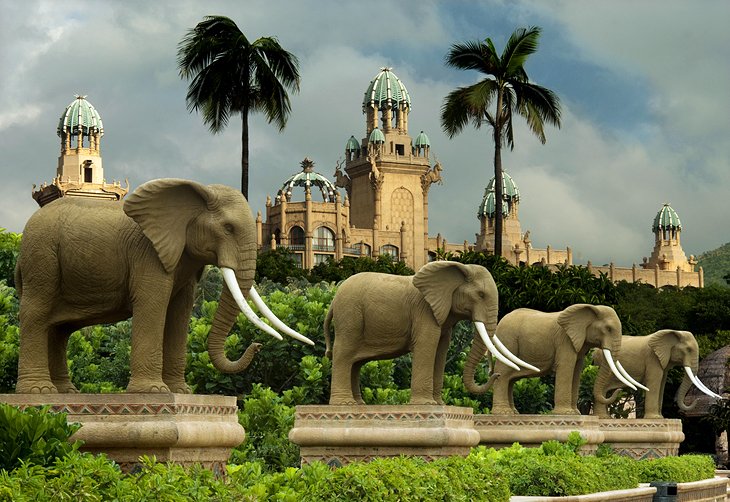How Johannesburg North Attractions can Save You Time, Stress, and Money.
Table of ContentsTop Guidelines Of Johannesburg North AttractionsIndicators on Johannesburg North Attractions You Need To KnowGet This Report about Johannesburg North AttractionsJohannesburg North Attractions Fundamentals ExplainedThe Of Johannesburg North AttractionsIndicators on Johannesburg North Attractions You Need To KnowRumored Buzz on Johannesburg North Attractions
However you ought to maintain protection in mind and travelers have to stay sharp whatsoever times when in unfamiliar surroundings. Talk to the citizens when you are in community to learn about the location you are remaining in. Johannesburg North attractions. When on the street (this does not relate to mall and various other protected settings) best general suggestions is to try your finest to resemble a local and to prevent presenting any type of riches
Unknown Facts About Johannesburg North Attractions
Teacher Revil Mason O. J. (Thomson, 1946) discovered the Witwatersrand's pre-colonial history. His archaeological job took off the 'em pty land' misconception, according to which the area was lacking human habitation prior to the arrival of European settlers. In his magazines Prehistory of the Transvaal: A Record of Human Task (1962) and Origins of Black Individuals of Johannesburg and the Southern Western Central Transvaal Advertisement 3501880 (1986 ), Teacher Mason showed the extent of social and economic development in the location prior to Europeans established foot here.

Johannesburg North Attractions - Truths
He showed the government's authorization, granted after he had actually vouched to keep his discoveries trick. In 1874, small mining operations were begun in the Magaliesberg, where an Australian, Henry Lewis, had actually uncovered gold down payments. In 1878, David Wardrop located gold in quartz blood vessels at Zwartkop, north of Krugersdorp. In 1881, Stephanus Minnaar encountered gold on the farm Kromdraai, near the Cradle of Mankind.
In March 1886, a protrusion (quickly to be called the Main Reef) was located, quite luckily, on Gerhardus Oosthuizen's farm Langlaagte. Some say that the Lancastrian coal miner George Walker found this coral reef. An additional travelling English miner, George Harrison (that had actually formerly worked in Australian mines) obtained a prospecting licence in respect of Langlaagte in May 1886.
He chose to move on in a mission for greener pastures, and disposed of his Langlaagte insurance claim for the handsome sum of 10. Alas: underneath lay the richest goldfield ever discovered. The discovery of this rich auriferous reef provoked a gold rush that signalled the end of agrarian serenity in the southern Transvaal.
It would, within six years, come to be the largest town in southern Africa. Within a years, it would certainly make the Z. A. R. till after that an anarchical and insolvent little state the most affluent country in Africa. By the turn of the century, the Z. A. R. was to surpass Russia, Australia and the USA of America to come to be the globe's leading gold manufacturer, producing more than a quarter of the world's gold.
The 3-Minute Rule for Johannesburg North Attractions
It was called Ferreira's Camp, named after Colonel Ignatius Ferreira. He was a Boer traveler upon whom the British authorities had presented the condition of Friend of the Many Distinguished Order of St Michael and St George (qualifying him to the post-nominal letters C. M. G.) in gratefulness for his duty in the battle that had deposed the Pedi king Sekhukhune in 1879.
Quickly the camp was bursting with outdoors tents and wagons as newbies arrived daily from everywhere. By September 1886, some 400 people stayed in Ferreira's Camp, which soon flaunted upreared iron and hardwood buildings. 2 other camps were developed: Meyer's Camp on the farm Doornfontein, and Paarl Camp. The latter was nicknamed Afrikander Camp; many individuals from the Cape Nest settled there.

The 3-Minute Rule for Johannesburg North Attractions
This name acquired currency by word of mouth, such that the State Assistant affirmed the name to the Mining Commissioner on 9 October 1886. Stands in the village were auctioned on 8 December 1886. While some stands were marketed for 10, others were knocked down for as low as sixpence.
2 years later, these erven were to transform hands for as long as 750 each. The tented camps dwindled as a dorp of corrugated iron buildings established and expanded north of the mines situated along the Main Coral Reef Road. Locations such as Jeppe's Town (where working-class immigrants erected their residences) and Doornfontein (where the upscale brand-new 'Randlords' began to create their opulent homes) were soon included in the ever-expanding map of the community.
Indicators on Johannesburg North Attractions You Need To Know
Apart from the road names, there were no signs of Johannesburg being positioned in a Dutch-speaking nation., almost everyone talked English and also the Federal more helpful hints government slaves dealt with one in why not try here English, unless they were very first attended to in the Taal (or Reduced Dutch)'.
Britain had a rate of interest in making sure optimal conditions for gold manufacturing on the Witwatersrand, and that the gold was exported to London instead than Berlin a critical provided all the extra clamant by the Z. A. R.'s increasing toenadering with Germany. Mine owners were on a crash course with President Kruger, whose plan of monopolistic concessions (typically approved to his cronies) protected against mining click here for more companies from obtaining supplies of products (especially dynamite) and labour on their very own, cheaper terms
Getting The Johannesburg North Attractions To Work
In 1890, the Volksraad had restricted the franchise to white men who had resided in the Z. A. R. for fourteen years or longer, thus disqualifying the majority of the immigrants (who took place to be the significant contributors to the fiscus). Frustration for the vote was a simple pretense for advertising a different schedule; the majority of uitlanders concerned themselves as momentary site visitors and had no objective of staying in the Z.